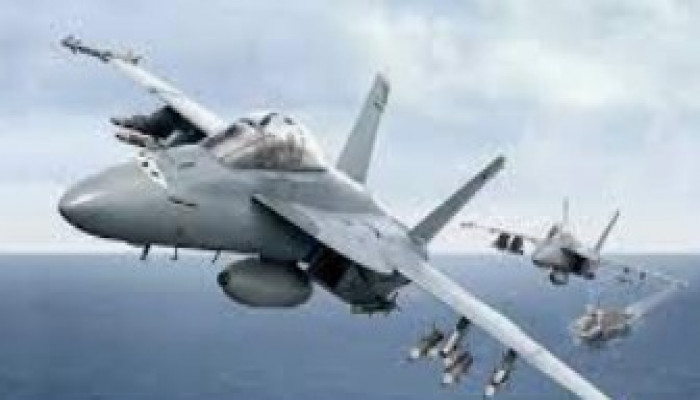Chinese propaganda machinery mocks US F-35 accident during FONOPs
- In Reports
- 04:16 PM, Jan 29, 2022
- Myind Staff
A US Stealth Fighter F-35C had trouble landing on Supercarrier Carl Vinson on January 24 while patrolling the South China Sea, causing the Chinese Communist Party (CCP) to boost its information warfare machines. The USS Carl Vinson, the USS Abraham Lincoln, and two landing ships took part in freedom of navigation operations to deter Chinese PLA from attacking Taiwan amid the US-Russia crisis over Ukraine.
In the propaganda media, analysts with so-called think tanks stated that the F-35 accident showed the exhausted state of the US military, which has demonstrated its prowess against China at the cost of the physical and mental health of its troops, as well as high technical risks.
Although the pilot of the F-35C crash-landed safely, the US Navy is involved in salvaging operations to prevent the Chinese from copying the latest warfighting technology before it is salvaged. However, despite the criticisms of the Chinese media regarding US aircraft carrier operations, the fact remains that fighter accidents aboard aircraft carriers are common.
As a matter of fact, the US Navy has operated aircraft carriers for 100 years, with some 70 of them serving the nation and three more in construction. Fighter pilots have only 500 feet of flight deck to land or take off from an aircraft carrier, making maritime aviation the most complex part of war fighting. Other than handling the aircraft, the pilot has to consider the pitch and roll of the megaship, as well as blowing winds, rain, and darkness.
These floating islands have not only been in operation since ages but have also been successfully employed by the US Navy to wage wars and project power around the world.
In Chinese propaganda and military media, India's military prowess is often criticized without acknowledging that India operates aircraft carriers since 1961 and has an impressive seagoing history, including the 1971 blockade of Karachi harbour.
As opposed to the long-distance ballistic missiles, many armchair analysts argue that carrier-based aircraft flights are prohibitively expensive and outdated. The authors recommend that shore-based fighters could perform the same function as the carriers, with a mid-air refueling option providing the necessary operational range.
While on high seas without land in sight, Indian Air Force fighter pilots found themselves disoriented and unreliable in the role of reference point on high seas, according to the Indian Navy. In conjunction with India's 75th anniversary of independence, the country's sole aircraft carrier INS Vikramaditya is currently under maintenance while Prime Minister Narendra Modi launched the new aircraft carrier INS Vikrant on that day.
The PLA Navy carrier operation is yet to be established, while two of India's aircraft carriers have already been decommissioned. The first refitted aircraft carrier Liaoning has yet to be declared combat-ready, and the first fighters have yet to land on its decks. It is unknown what the carrier's second aircraft carrier Shandong can do as far as fighter operations are concerned.
It has only been since February 2017 in Shanghai that Jiangnan Shipyard began construction on the China's third carrier, Type 003. China has successfully copied the Russian Su-33 carrier-based aircraft to stand its own J-15 line of aircraft, but the naval aviation cannot be copied, and fighter pilots must be trained in pitch-black darkness on high seas. It will take at least a decade for Chinese naval aviation to gain sea legs.
Image source: Hindustan Times







Comments